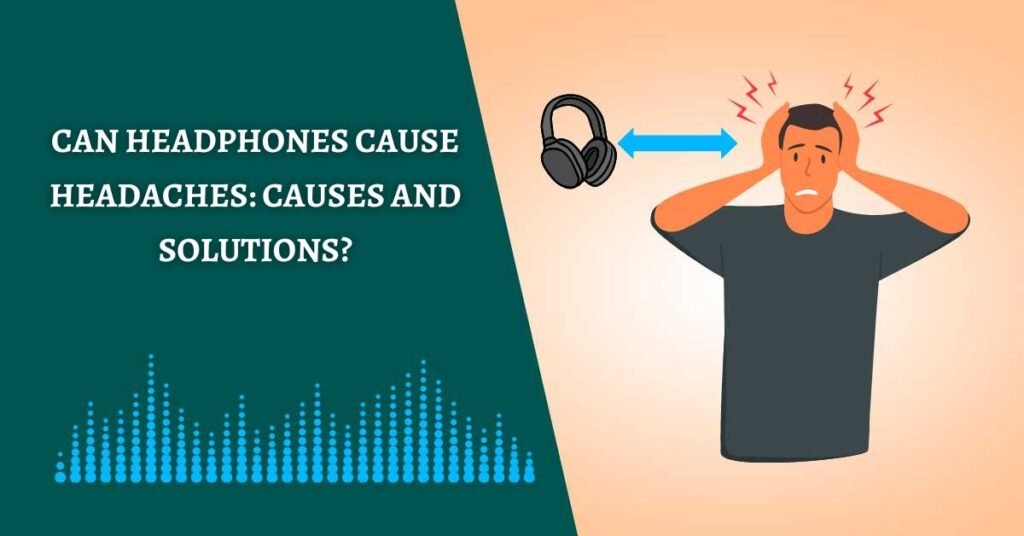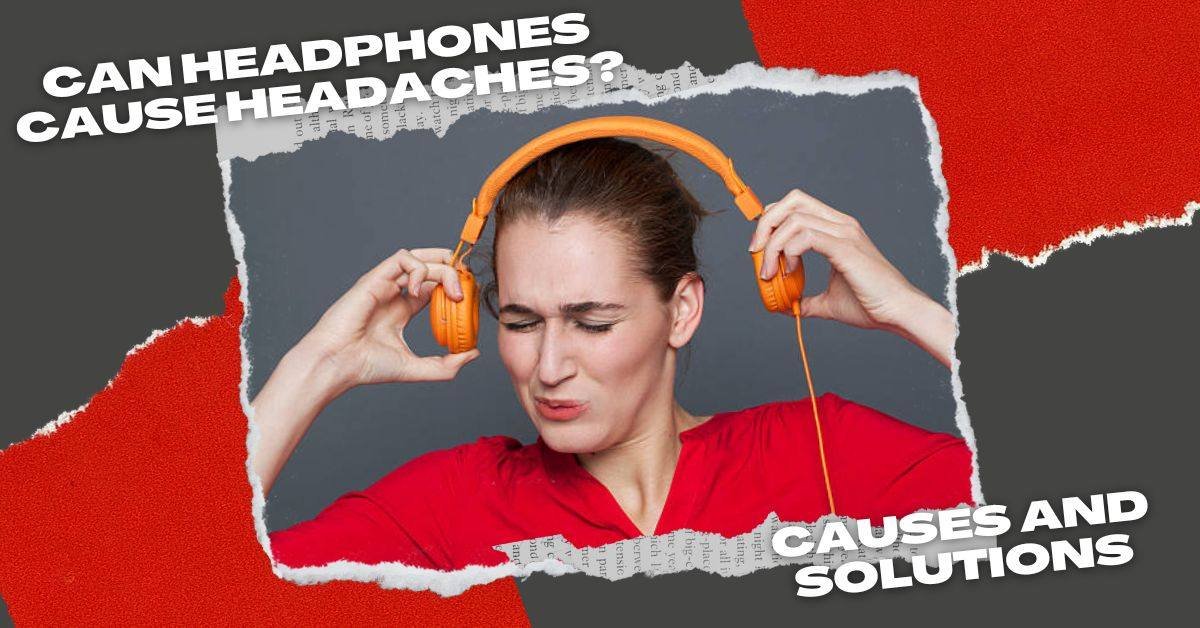Headaches are a common condition that affects people of all ages and backgrounds. They can be caused by various factors, such as stress, dehydration, fatigue, or underlying health issues. One lesser-known cause of headaches is the use of headphones. Although headphones provide a convenient and immersive way to enjoy audio content, they can also produce sound pressure that can strain the ears and head. In this article, we’ll examine the headphones cause headaches and suggest practical solutions to avoid or manage them.
What Are Headphones?
Before we delve into the headache aspect, let’s clarify what headphones are and how they work. Headphones are a type of audio device that consists of two speakers or transducers that are placed over the ears. They can be wired or wireless and come in various shapes and sizes, from in-ear buds to over-ear cups. Headphones are designed to convert electrical signals from a sound source, such as a smartphone or a computer, into sound waves that can be heard by the listener. The quality and characteristics of the sound depend on several factors, such as the type of headphones, the sound source, and the audio settings.
Can Headphones Cause Headaches?
Now, let’s tackle the main question: can headphones cause headaches? The answer is yes, but not in all cases. Headphones can cause headaches if they produce excessive sound pressure levels, have unbalanced frequency responses, are used for prolonged periods, or fit poorly. Let’s examine each factor in more detail.
Sound Pressure Level
The sound pressure level (SPL) is a measure of the loudness of sound, expressed in decibels (dB). Sounds that are too loud or too prolonged can damage the ears and lead to hearing loss, tinnitus, or hyperacusis. According to the World Health Organization (WHO), exposure to sounds above 85 dB for more than 8 hours can cause hearing impairment. Most headphones can produce sound levels that exceed 85 dB, especially at maximum volume or with bass-boosted tracks. Therefore, if you listen to loud music through headphones for extended periods, you may experience headaches, ear pain, or dizziness.
Frequency Response
The frequency response of headphones refers to the range of frequencies that they can reproduce accurately. Different headphones have different frequency responses, depending on the driver size, design, and tuning. Some headphones may emphasize certain frequencies, such as bass or treble, while others may have a flat or neutral response. If you listen to music that has an unbalanced frequency spectrum, your brain may struggle to process the sound correctly, leading to fatigue, discomfort, or headaches.
Duration of Use
The duration of the use of headphones is another factor that can contribute to headaches. When you wear headphones for an extended period, the pressure and weight on your head and ears can cause tension, soreness, or pain. Moreover, wearing headphones for too long can prevent proper airflow to the ears and increase the risk of ear infections, wax buildup, or other ear-related problems.
Fit and Comfort
The fit and comfort of headphones are crucial for preventing headaches. If your headphones are too tight, too loose, or poorly cushioned, they can cause discomfort, pressure, or pain in the head and ears. Additionally, some headphones may create a vacuum seal that traps heat and moisture, leading to skin irritation or acne. It’s essential to choose headphones that fit snugly but not too tightly, have adequate padding, and allow some airflow to the ears.
Preventing Headaches from Headphones
Now that we’ve seen the possible causes of headphone-induced headaches let’s explore some practical tips to prevent them.
Choosing the Right Headphones
Choosing the right headphones is the first step in preventing headaches. Look for headphones that have a flat or balanced frequency response, lower SPL levels, and a comfortable fit. Over-ear headphones are generally better at reducing external noise and preventing sound leakage, while in-ear buds may be more portable and lightweight. If you’re a gamer, consider headphones with a built-in microphone and noise-cancellation feature for a more immersive experience.
Taking Breaks
Taking breaks from wearing headphones can help reduce the risk of headaches and ear fatigue. Experts recommend following the 60/60 rule: listening to music at 60% volume for no more than 60 minutes at a time, followed by a 5-10 minute break. During the break, stretch your neck, shoulders, and arms, and move around to improve blood circulation and reduce muscle tension.
Adjusting the Volume and EQ
Adjusting the volume and equalizer settings of your headphones can also help prevent headaches. Try to keep the volume at a moderate level, preferably below 85 dB, and avoid listening to music in noisy environments. If you listen to music that has a high bass or treble content, adjust the equalizer to balance the frequencies and avoid sharp peaks.
Stretching and Relaxing
Stretching and relaxing the muscles of the head, neck, and shoulders can also alleviate tension and prevent headaches. Simple exercises like neck rotations, shoulder shrugs, and chin tucks can help loosen up tight muscles and improve posture. You can also try yoga, meditation, or deep breathing exercises to reduce stress and promote relaxation.
Using Alternative Sound Sources
Using alternative sound sources besides headphones can also reduce the risk of headaches. For example, you can listen to music through speakers, use a noise-cancelling device, or switch to a different audio format, such as audiobooks or podcasts. This can give your ears and head a break from the direct sound pressure of headphones and create a more comfortable listening experience.

Alleviating Headaches from Headphones
If you still experience headaches despite following the prevention tips, there are several ways to alleviate them.
Massage and Acupressure
Massage and acupressure techniques can help release tension and stimulate blood flow to the head and neck area. You can use your fingertips to apply gentle pressure to the temples, forehead, or base of the skull, or use a handheld massager or a foam roller. You can also try a scalp massage or a reflexology session to relax the entire body.
Heat and Cold Therapy
Heat and cold therapy can also provide relief from headaches. Applying a warm or cold compress to the forehead or temples can help reduce inflammation, constrict blood vessels, and promote relaxation.
Pain Medication
If the headache persists, over-the-counter pain medication such as ibuprofen, aspirin, or acetaminophen can help alleviate the pain. However, it’s essential to follow the recommended dosage and avoid using medication for an extended period or excessively. If the headache persists or becomes severe, seek medical attention from a healthcare professional.
Chiropractic and Physical Therapy
Chiropractic and physical therapy can also help alleviate headaches caused by headphones. These therapies focus on restoring proper alignment, posture, and mobility of the spine, neck, and shoulders, which can reduce tension and stress on the muscles and nerves. They may include spinal adjustments, massage, stretching, and strengthening exercises, among others.
Conclusion
Headphones are a popular accessory for music lovers, gamers, and professionals, but they can also cause headaches and ear-related problems. The main causes of headphone-induced headaches are excessive sound pressure, frequency imbalance, duration of use, and fit and comfort issues. To prevent headaches, choose the right headphones, take breaks, adjust the volume and EQ, stretch and relax, and use alternative sound sources. If you still experience headaches, massage and acupressure, heat and cold therapy, pain medication, chiropractic, and physical therapy can help alleviate the symptoms. It’s essential to listen to your body and seek professional advice if the headache persists or becomes severe.
FAQs
Q. How long can I wear headphones without getting a headache?
A. Experts recommend following the 60/60 rule: listening to music at 60% volume for no more than 60 minutes at a time, followed by a 5-10 minute break. This can help reduce the risk of headaches and ear fatigue.
Q. Can noise-cancelling headphones cause headaches?
A. Noise-cancelling headphones use active noise control technology to reduce external noise, which can cause a feeling of pressure or discomfort in some people. If you experience headaches with noise-cancelling headphones, try switching to a different audio format or reducing the volume.
Q. Are wireless headphones better than wired ones for preventing headaches?
A. Wireless headphones may be more convenient and portable than wired headphones, but they have their own set of problems, such as latency, signal interference, and battery life. Both types of headphones can cause headaches if not used properly.
Q. Can headphones cause tinnitus?
A. Prolonged exposure to loud music or noise through headphones can damage the hair cells in the inner ear, leading to tinnitus or ringing in the ears. It’s essential to use headphones at a moderate volume and take breaks to prevent hearing damage.
Q. When should I see a doctor for headaches caused by headphones?
A. If the headache persists or becomes severe, despite following the prevention tips and trying self-care remedies, it’s essential to seek medical attention from a healthcare professional. They can diagnose the underlying cause of the headache and recommend appropriate treatment.

